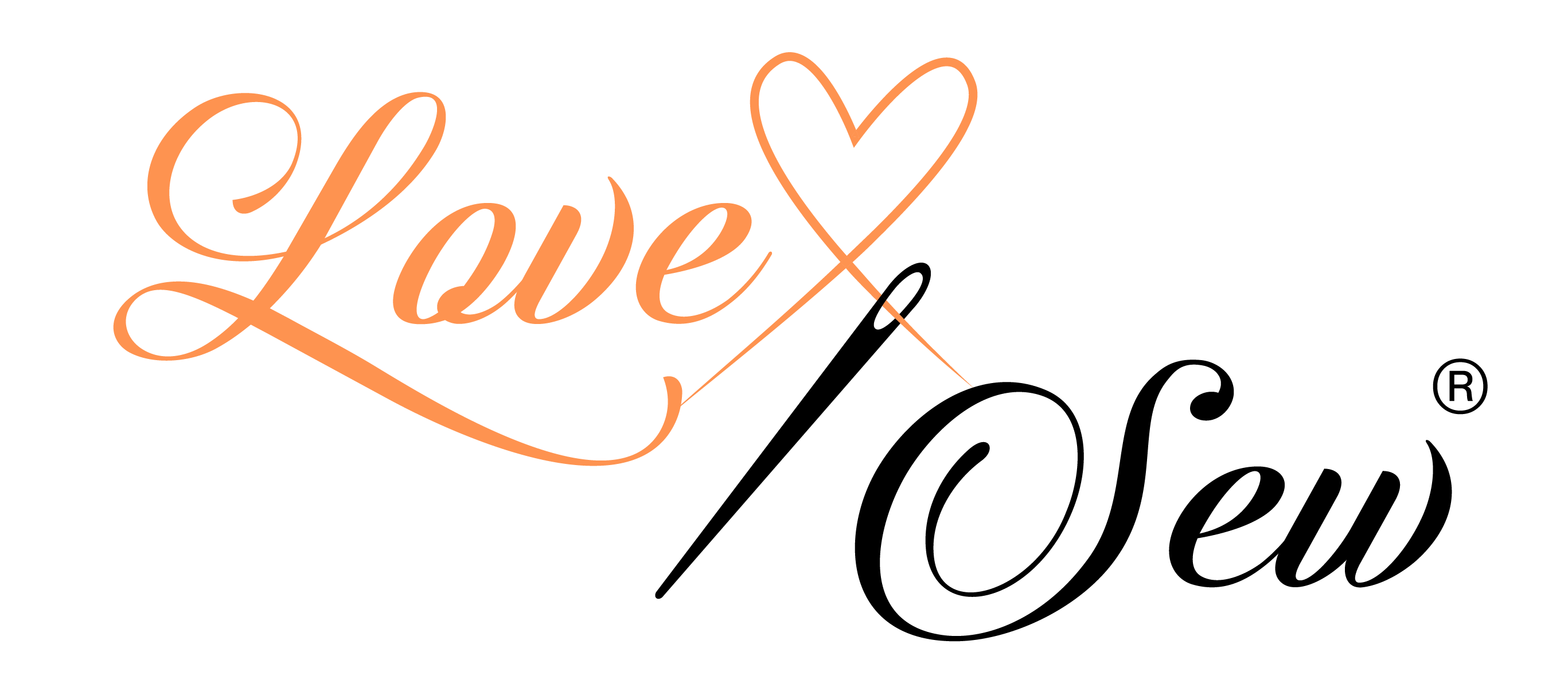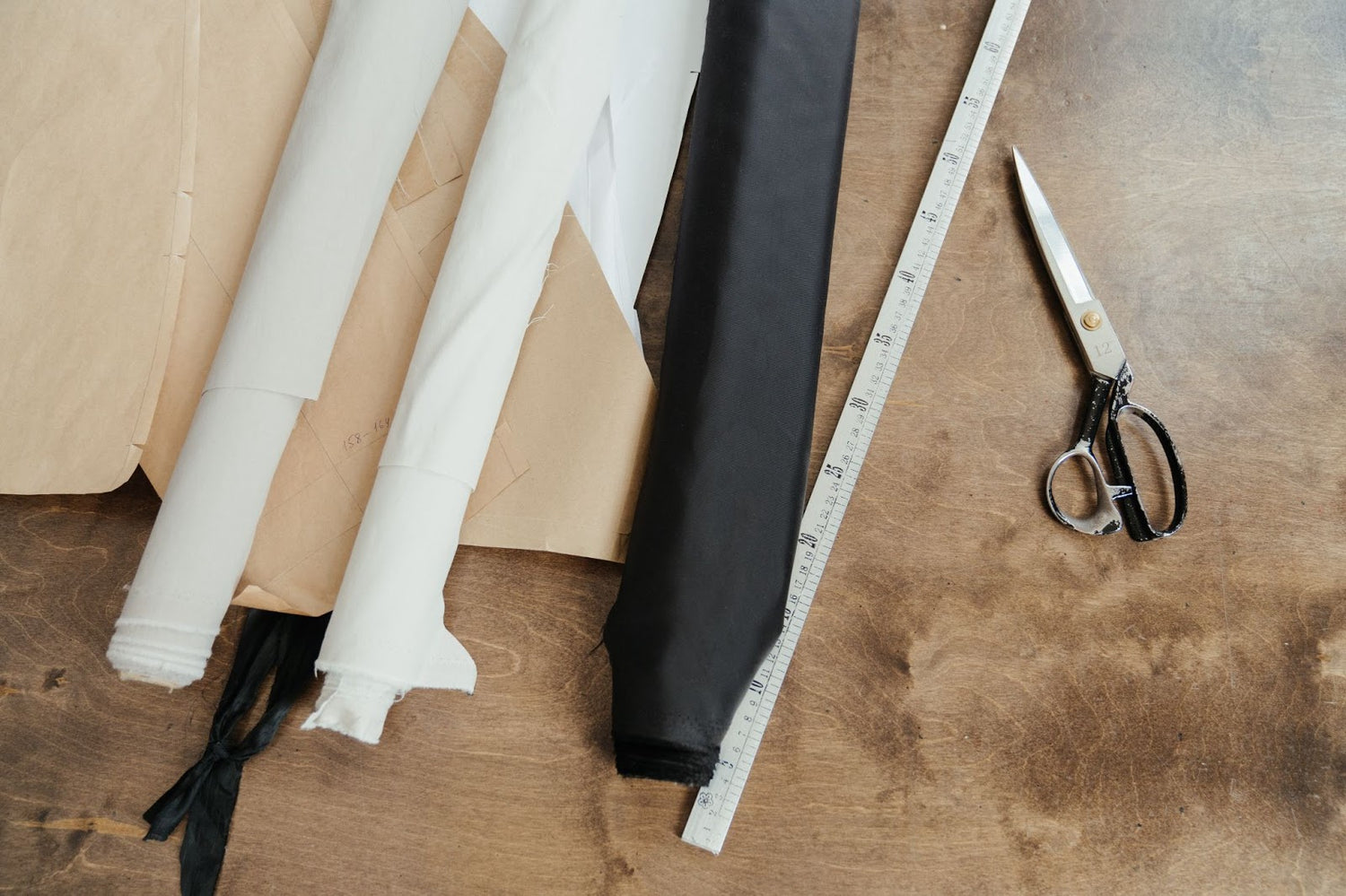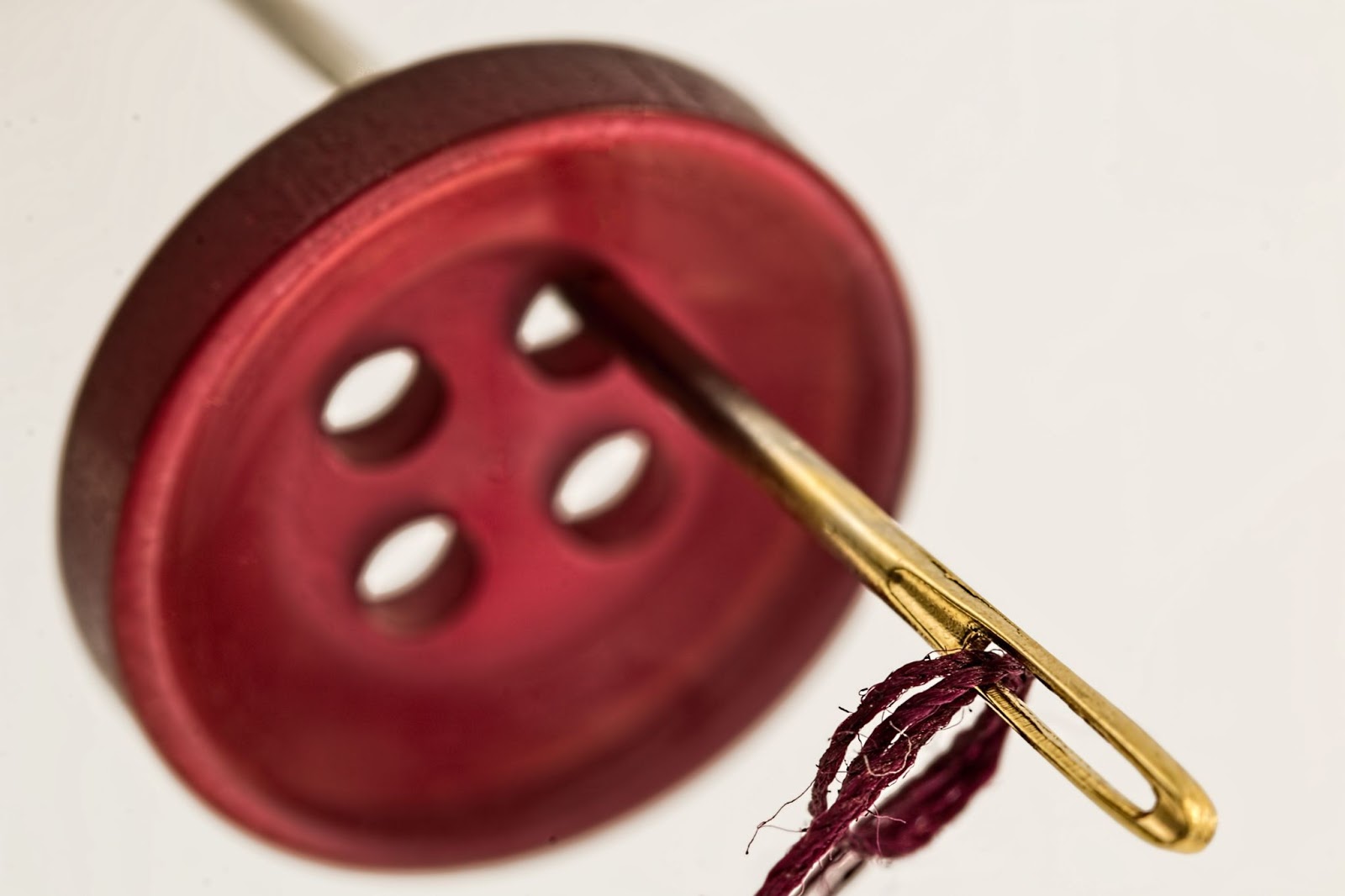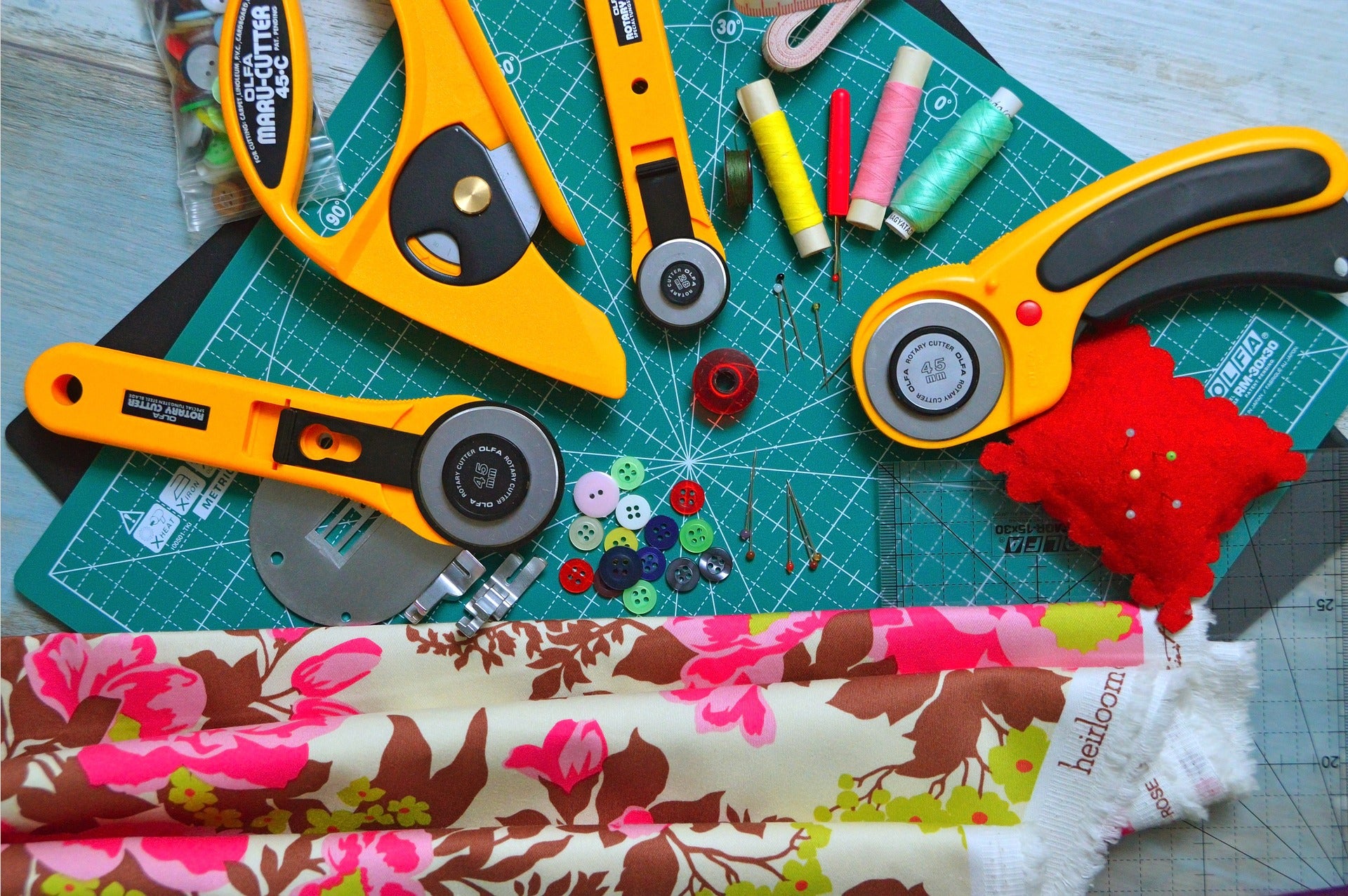Ruching fabric is a great way to add texture, interest, and volume to clothing items such as skirts, sleeves, and bodices. For new garment-makers, ruching can seem intimidating. However, it’s probably easier than you think!
There are a variety of methods you can use to ruche fabric. The one you select will depend on the type of fabric you’re using, the area of the garment you want to be ruched, and your skill level. Today, we’ll take you through four different methods of ruching fabric and give you a bunch of tips and tricks to make the entire process go smoothly!
What Is Ruching?
As previously mentioned, ruching is a technique used in garment making that adds interest, texture, stretch, and volume to clothing items. The effect of ruching is created by a gathered overlay of fabric strips that are pleated, fluted, or gathered together. Ruching can be symmetrical or asymmetrical in design.
Ruching creates a ripple-like effect on a garment, which not only looks beautiful but offers increased volume and stretch to an area. It’s incredibly popular on wedding gowns. Commonly ruched fabrics include lace, chiffon, and muslin.
How To Sew Ruching
There are a variety of different methods used to sew ruching. You can add ruching to original designs, but you can also alter pre-made patterns to include a ruched effect if they don’t already. To add ruching to an item of clothing, you will need to create extra length in the area you want to ruche, to account for the gathering of the fabric.
For example, if you’re sewing a skirt, and you want an asymmetrical ruched effect to add ruching to one side of the garment, one side of your skirt will need to be longer than the other. Once you add the ruching effect, the gathering of the excess fabric will make the two sides appear the same length. The more fabric you add, the more ruching you’ll have, and the more asymmetrical your design will look.
Once you’ve added the required fabric, you’re ready to begin ruching. We’ve gone through four different ruching methods below. Be sure to read through them all thoroughly, so you can select the method that’s best suited to your skill level. Be sure you familiarize yourself with how your sewing machine works before you start a new project!
Ruching Method #1: Ruching With Elastic
You’ll often see ruching done with elastic around necklines, especially with stretch fabric. Elastic is used for ruching to gather up the fabric at the point where the garment may require some extra fullness, like in a bust or a neckline. Ruching with elastic can also be used to make a garment more form-fitting. Additionally, ruching with elastic can also be used for decorative purposes. It’s especially common in costumes.
- To begin sewing elastic for ruching, start by cutting a piece of elastic. Measure and cut your elastic to the length you want the finished ruching.
- Pin or clip either end of the elastic along the fabric you’re going to ruche at its full length. Because the fabric is longer than the elastic, it will gather at the endpoints. This is what we want. Ruching occurs because the elastic causes the material to scrunch up but still leaves it loose enough to pull on.
- Backstitch the end of your elastic well, then stitch your elastic and fabric together gently while pulling on the elastic to get it to fit all the way to the end of the ruched area. In general, you will probably need to pull the elastic in front and behind your sewing machine’s foot.
- You can straight stitch over your elastic or zig-zag stitch if you prefer. If you have one, we recommend using a stretch needle. Stretch needles allow the bobbin hook to get closer to the needle eye, preventing skipped stitches on stretchy fabrics like elastic, which are notoriously difficult to work with. Be careful not to pull on your elastic too hard as you sew over it, or you’ll end up with uneven stitches.
- Once you’ve sewn all the way around the perimeter of your elastic, your ruching is finished! Turn it over and enjoy the lovely gathered effect.
Ruching Method #2: Ruching By Hand
This ruching method is great because it doesn’t require the use of a machine! This is the traditional way to create a ruched effect. It can be used on any weight of fabric, and it enables you to have total control over the size of your folds simply by adapting the width of your stitches.
- Begin by threading up two hand sewing needles. Make sure your thread is doubled up and knotted securely at the ends. Your thread needs to be a little longer than the final length you want your fabric to be when it’s gathered.
- Hand stitch two rows of running stitch parallel to each other. You want these stitches to be ¼ inch away from the edge of the fabric, and ¼ inch apart from each other.
- Gently push the fabric towards the knotted end of the thread as you go. Once you get to the end, double-check that the length of your ruched fabric is satisfactory and that your gathers are evenly spaced. Once you’re happy with your ruching, knot the two free ends of your thread together, thereby securing your gathers.
- If you want to secure your ruching fully, run over your gathers with a row or two of basting stitches on your machine.
Ruching Method #3: Ruching With Cord
This method involves sewing a channel into your fabric, through which you can thread a thread cord or a fabric pull tie. This casing can be on the outside of your garment for a decorative effect or for a punch of contrasting color. If you prefer an invisible casing, it can be placed on the inside of your garment.
- Begin by cutting a strip of fabric 1 ½ inches wide. The length of the fabric will be the length of the garment edge to be gathered, plus ½ inch on the bottom and the top to account for seam allowances.
- On the wrong side of the strip, press the raw edges over with an iron by ¼ inch all the way around.
- Place your strip right side up onto the main fabric of your garment. This can be on the outside or the inside of the piece, depending on the look you’re going for.
- Stitch around the outside of your fabric strip, creating a channel. Be sure to leave one end of your channel open.
- Stitch up the middle of your channel, but leave ¾ inch of open space at the closed end.
- Attach your cord or fabric tie to a safety pin and thread it through the fabric channel, turning around at the end and going down the other side of the channel.
- Pull the cord to your desired length. This will cause the fabric to bunch up, creating a ruching effect. You can knot the ends of your cord together to stop them from pulling through, or you can just run a few stitches over them to hold them in place.
Ruching Method #4: Ruching With Pleating
Instead of gathering, you can create a ruched effect by pleating a strip of fabric to fit into a bodice, on a sleeve, or around any other part of a garment you want to add detail and visual interest to. Pleating ruching can give a gorgeous dramatic effect to ballgowns and bridal gowns. Thinner fabrics work best here, so try out this method on a small piece of fabric first to see if the weight is suitable.
- Cut a strip of fabric that is one inch wider than the area you want to cover and four times longer. Fold the top edge of your fabric over about ½ inch, then press it in place.
- Take as much, or as little, fabric as you’d like for your first pleat, then fold it over. We suggest folding the fabric over about one inch from the top and making a fold that is about ½ inch wide. Pin it in place, pressing if needed.
- Continue this process, making relatively even-sized folds and pinning them in place until you have enough pleats to cover your desired area.
- Adjust your pleats how you see fit, then run each side of your fabric under your sewing machine to secure your pleats in place. If it's an especially wide piece of fabric, you may want to stitch down the middle as well. Press with an iron once more to get the pleats nice and crisp.
- Secure your ruched detail onto your garment wherever you’d like.
Conclusion
Ruching is a great way to add volume, detail, and visual interest to a garment. Plus, it’s easier to do than you probably think! There are a variety of different ways to create a ruched effect. All you have to do is pick the one that works best for you.
If you’d like to learn more about sewing, check out Love Sew’s comprehensive blog, where we feature pieces like this one about how to stay stitch.
Sources:
Ruching | Fashion AZ | BoF Education | Business Of Fashion




Leave a comment
This site is protected by hCaptcha and the hCaptcha Privacy Policy and Terms of Service apply.